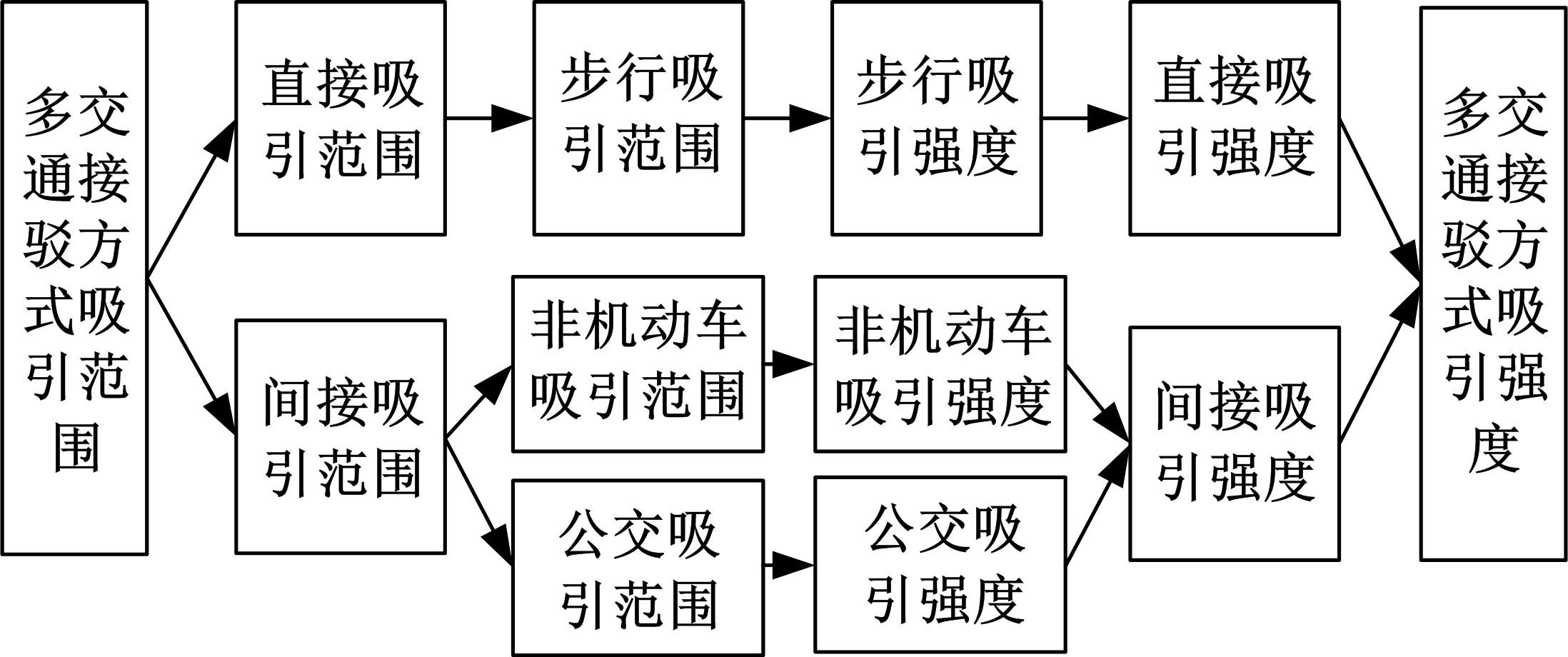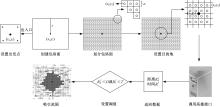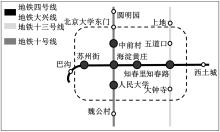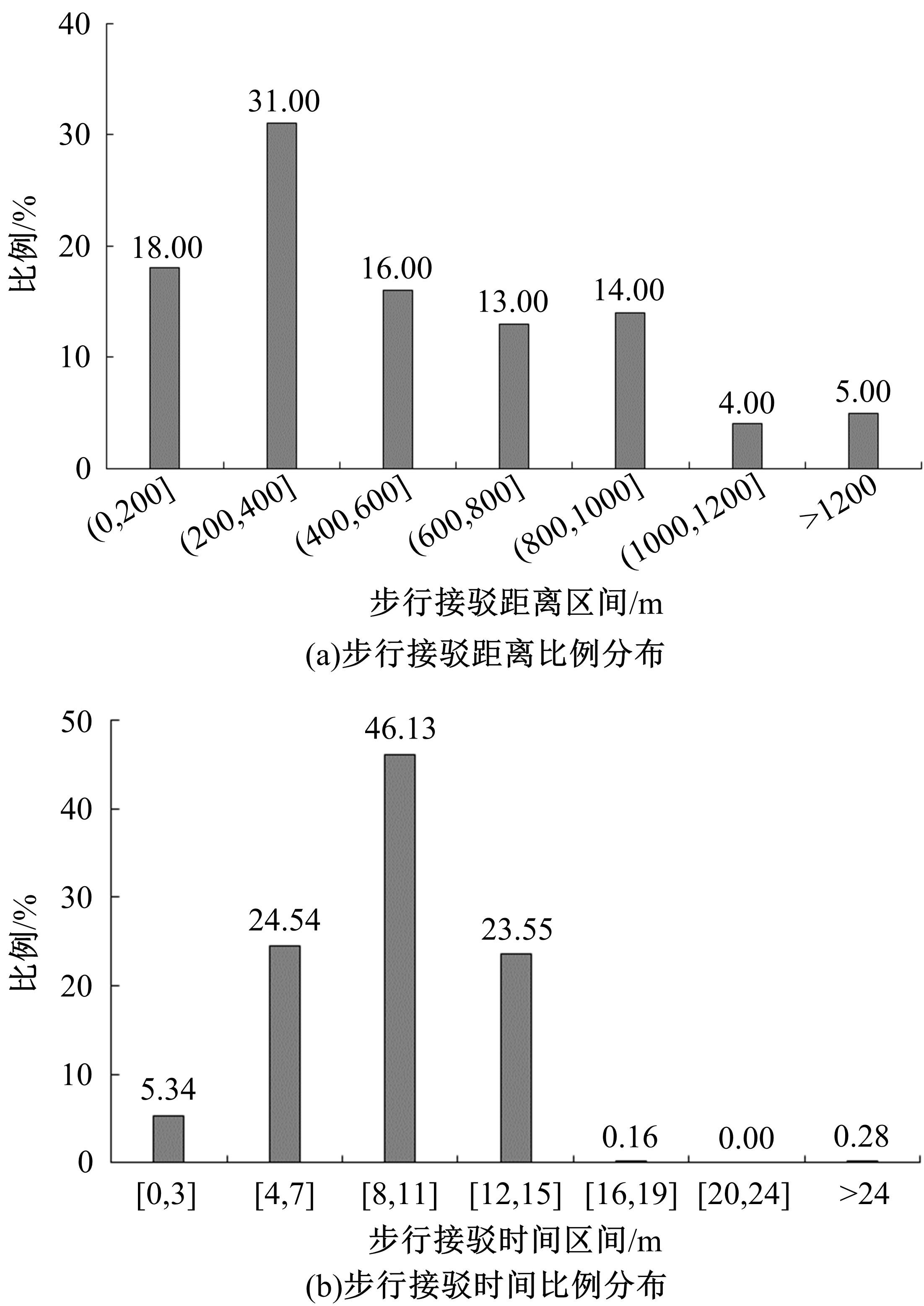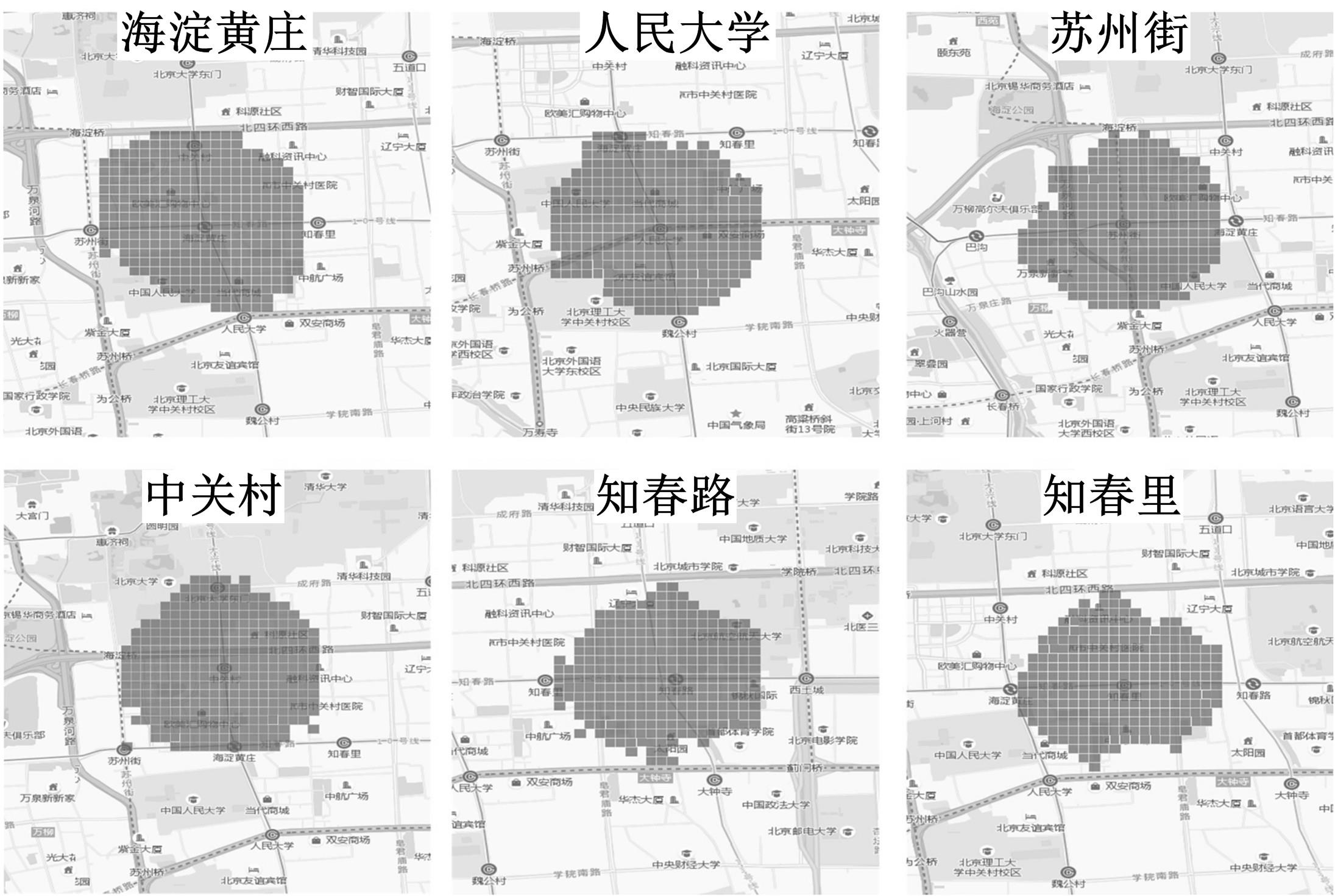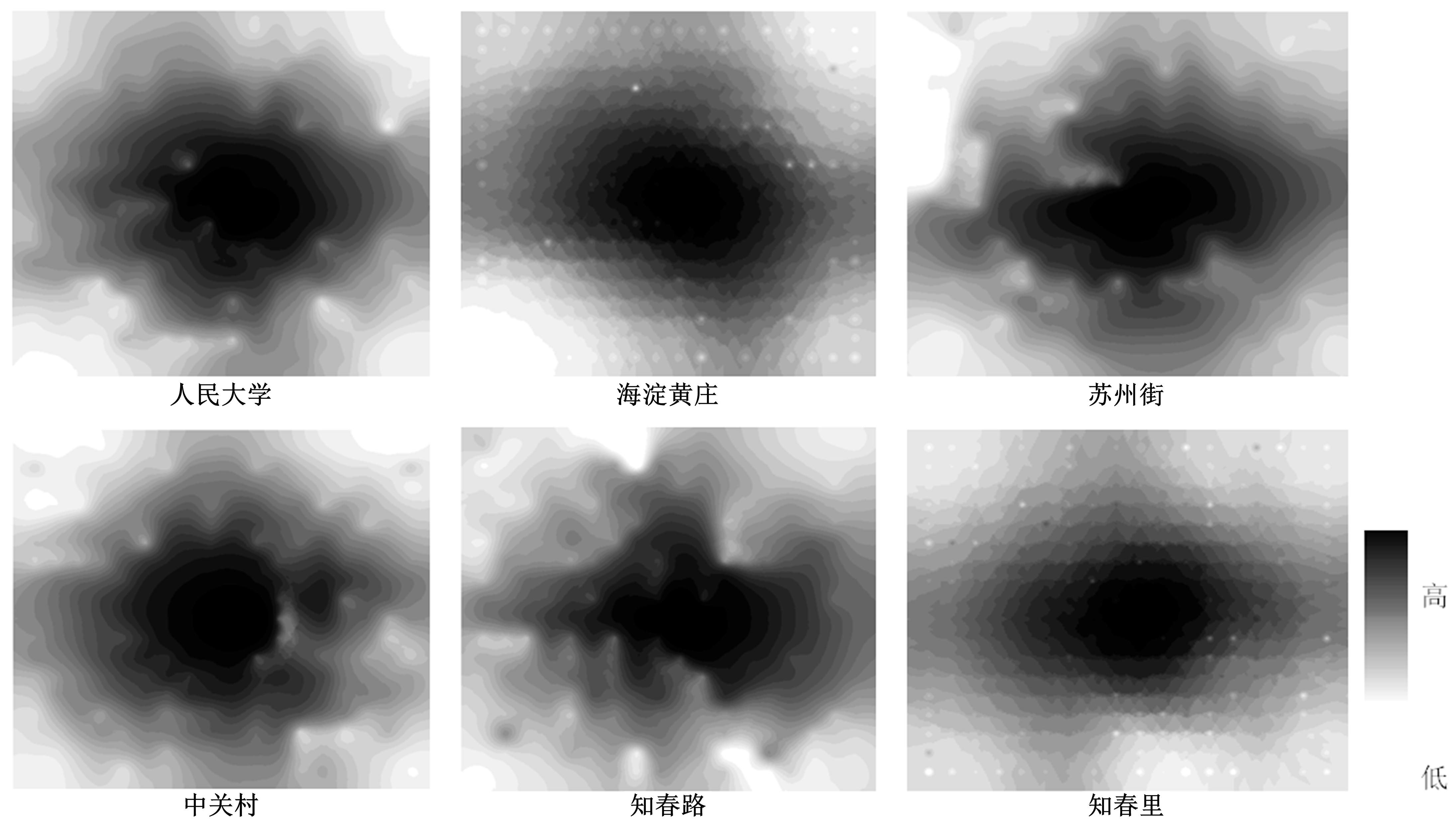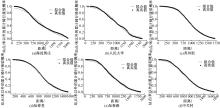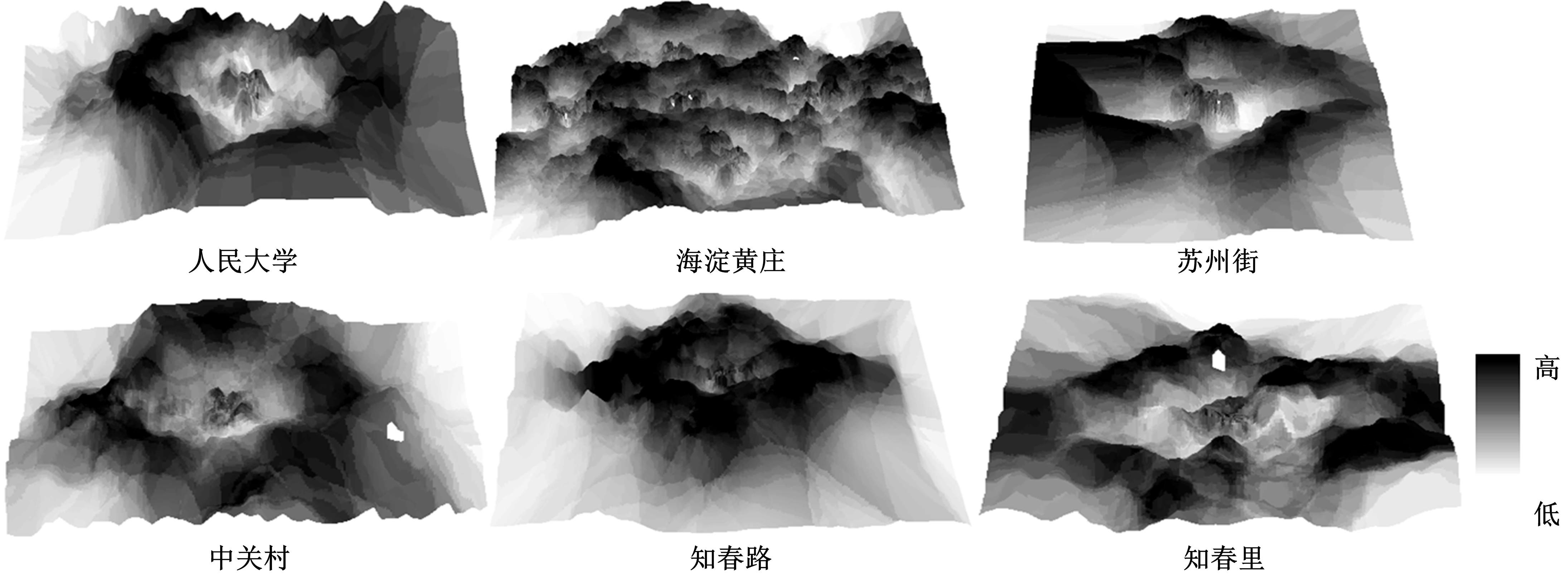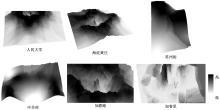Journal of Jilin University(Engineering and Technology Edition) ›› 2023, Vol. 53 ›› Issue (2): 439-447.doi: 10.13229/j.cnki.jdxbgxb20210667
Previous Articles Next Articles
Modelling on catchment area and attraction intensity of urban rail transit stations
Jing WANG1( ),Feng WAN2,Chun-jiao DONG1(
),Feng WAN2,Chun-jiao DONG1( ),Chun-fu SHAO1
),Chun-fu SHAO1
- 1.Key Laboratory of Transport Industry of Big Data Application Technologies for Comprehensive Transport,Beijing Jiaotong University,Beijing 100044,China
2.Hikvision Research Institute,Hangzhou 310012,China
CLC Number:
- U231.4
| 1 | Jun M J, Choi K, Jeong J E, et al. Land use characteristics of subway catchment areas and their influence on subway ridership in Seoul[J]. Journal of Transport Geography, 2015, 48: 30-40. |
| 2 | Li S Y, Lyu D J, Huang G P, et al. Spatially varying impacts of built environment factors on rail transit ridership at station level: a case study in guangzhou, china[J]. Journal of Transport Geography, 2020, 82: 102631. |
| 3 | Yang R R, Yan H, Xiong W, et al. The study of pedestrian accessibility to rail transit stations based on KLP model[J]. Procedia-Social and Behavioral Sciences, 2013, 96: 714-722. |
| 4 | 申犁帆, 王烨, 张纯, 等. 轨道站点合理步行可达范围建成环境与轨道通勤的关系研究——以北京市44个轨道站点为例[J]. 地理学报, 2018, 73(12): 2423-2439. |
| Shen Li-fan, Wang Ye, Zhang Chun, et al. Relationship between built environment of rational pedestrian catchment areas and URT commuting ridership: evidence from 44 URT stations in Beijing[J]. Acta Geographica Sinica, 2018, 73(12): 2423-2439. | |
| 5 | Eom J K, Choi J, Park M S, et al. Exploring the catchment area of an urban railway station by using transit card data: case study in seoul[J]. Cities, 2019, 95: 102364. |
| 6 | Lin D, Zhang Y, Zhu R X, et al. The analysis of catchment areas of metro stations using trajectory data generated by dockless shared bikes[J]. Sustainable Cities and Society, 2019, 49: 101598. |
| 7 | 王淑伟, 孙立山, 荣建. 北京市轨道站点吸引范围研究[J]. 交通运输系统工程与信息, 2013, 13(3):183-188. |
| Wang Shu-wei, Sun Li-shan, Rong Jian. Catchment area analysis of beijing transit stations[J]. Journal of Transportation Systems Engineering and Information Technology, 2013, 13(3): 183-188. | |
| 8 | 赵丹, 邵春福, 王军利, 等. 多方式诱导下通勤出行链交通方式组合选择行为模型[J]. 吉林大学学报: 工学版, 2015, 45(6): 1763-1770. |
| Zhao Dan, Shao Chun-fu, Wang Jun-li, et al. Modelling combined mode choice behavior of commute trip chain under multi-modal guidance[J]. Journal of Jilin University(Engineering and Technology Edition), 2015, 45(6): 1763-1770. | |
| 9 | 尹超英, 邵春福, 王晓全, 等. 考虑空间异质性的建成环境对通勤方式选择的影响[J]. 吉林大学学报: 工学版, 2020, 50(2): 543-548. |
| Yin Chao-ying, Shao Chun-fu, Wang Xiao-quan, et al. Influence of built environment on commuting mode choice considering spatial heterogeneity[J]. Journal of Jilin University(Engineering and Technology Edition), 2020, 50(2): 543-548. | |
| 10 | Wang N, Du Y C. Resident walking distance threshold of community[J]. Transport Research, 2015, 1(2): 20-24. |
| 11 | 陈卓, 金凤君, 杨宇, 等. 高速公路流的距离衰减模式与空间分异特征——基于福建省高速公路收费站数据的实证研究[J]. 地理科学进展, 2018, 37(8): 1086-1095. |
| Chen Zhuo, Jin Feng-jun, Yang Yu, et al. Distance-decay pattern and spatial differentiation of expressway flow: an empirical study using data of expressway toll station in fujian province[J]. Progress in Geography, 2018, 37(8): 1086-1095. | |
| 12 | 于向军, 槐元辉, 李学飞, 等. 基于克里金和粒子群算法的装载机铲掘轨迹规划[J].吉林大学学报: 工学版, 2020, 50(2): 437-444. |
| Yu Xiang-jun, Huai Yuan-hui, Li Xue-fei, et al. Shoveling trajectory planning method for wheel loader based on kriging and particle swarm optimization[J].Journal of Jilin University(Engineering and Technology Edition), 2020, 50(2): 437-444. |
| [1] | Min MA,Da-wei HU,Lan SHU,Zhuang-lin MA. Resilience assessment and recovery strategy on urban rail transit network [J]. Journal of Jilin University(Engineering and Technology Edition), 2023, 53(2): 396-404. |
| [2] | Song FANG,Jian-xiao MA,Gen LI,Ling-hong SHEN,Chu-bo XU. Traffic risk analysis of moving work zone on right lane of city expressway [J]. Journal of Jilin University(Engineering and Technology Edition), 2022, 52(8): 1786-1791. |
| [3] | Song-xue GAI,Xiao-qing ZENG,Xiao-yuan YUE,Zi-hao YUAN. Parking guidance model based on user and system bi⁃level optimization algorithm [J]. Journal of Jilin University(Engineering and Technology Edition), 2022, 52(6): 1344-1352. |
| [4] | Hong-feng XU,Hong-jin CHEN,Dong ZHANG,Qian-hui LU,Na AN,Xian-cai Geng. Fully⁃actuated signal timing technique for isolated signalized intersections in connected vehicle environment [J]. Journal of Jilin University(Engineering and Technology Edition), 2022, 52(6): 1324-1336. |
| [5] | Guo-zhu CHENG,Qiu-yue SUN,Yue-bo LIU,Ji-long CHEN. Cut⁃in behavior model based on game theoretic approach on urban roads [J]. Journal of Jilin University(Engineering and Technology Edition), 2022, 52(12): 2839-2844. |
| [6] | Heng-yan PAN,Wen-hui ZHANG,Bao-yu HU,Zun-yan LIU,Yong-gang WANG,Xiao ZHANG. Construction and robustness analysis of urban weighted subway⁃bus composite network [J]. Journal of Jilin University(Engineering and Technology Edition), 2022, 52(11): 2582-2591. |
| [7] | Zhuang-lin MA,Shan-shan CUI,Da-wei HU. Urban residents' low⁃carbon travel intention after implementation of driving restriction policy [J]. Journal of Jilin University(Engineering and Technology Edition), 2022, 52(11): 2607-2617. |
| [8] | Jing-xian WU,Hua-peng SHEN,Yin HAN,Min YANG. Residents' commuting time model under the nonlinear impact of urban built environment [J]. Journal of Jilin University(Engineering and Technology Edition), 2022, 52(11): 2568-2573. |
| [9] | Jie MA,Jia-jun HUANG,Jun TIAN,Yang-hui DONG. Simulation modeling of pedestrian target decision⁃making in evacuation process in transfer corridors of subway stations [J]. Journal of Jilin University(Engineering and Technology Edition), 2022, 52(11): 2600-2606. |
| [10] | Feng XUE,Chuan-lei HE,Qian HUANG,Jian LUO. Coordination degree of multimodal rail transit network [J]. Journal of Jilin University(Engineering and Technology Edition), 2021, 51(6): 2040-2050. |
| [11] | Bo PENG,Yuan-yuan ZHANG,Yu-ting WANG,Ju TANG,Ji-ming XIE. Automatic traffic state recognition from videos based on auto⁃encoder and classifiers [J]. Journal of Jilin University(Engineering and Technology Edition), 2021, 51(3): 886-892. |
| [12] | Dian-hai WANG,Xin-yi SHEN,Xiao-qin LUO,Sheng JIN. Offset optimization with minimum average vehicle delay [J]. Journal of Jilin University(Engineering and Technology Edition), 2021, 51(2): 511-523. |
| [13] | Xian-min SONG,Ming-ye ZHANG,Zhen-jian LI,Xin WANG,Ya-nan ZHANG. Setting of dynamic bus lane and its simulation analysis and evaluation [J]. Journal of Jilin University(Engineering and Technology Edition), 2020, 50(5): 1677-1686. |
| [14] | Hong-fei JIA,Xin-ru DING,Li-li YANG. Bi-level programming model for optimization design of tidal lane [J]. Journal of Jilin University(Engineering and Technology Edition), 2020, 50(2): 535-542. |
| [15] | Chao-ying YIN,Chun-fu SHAO,Xiao-quan WANG,Zhi-hua XIONG. Influence of built environment on commuting mode choice considering spatial heterogeneity [J]. Journal of Jilin University(Engineering and Technology Edition), 2020, 50(2): 543-548. |
|

